Washington state is full of natural beauty, with a diverse range of wildlife calling it home. Unfortunately, due to various human-induced and natural factors, some of these creatures are in danger of disappearing forever. Not only would the extinction of these fascinating animals result in an irreplaceable loss, but it would also disrupt the ecosystem’s delicate balance. Let’s look at some of the majestic animals endangered in Washington.
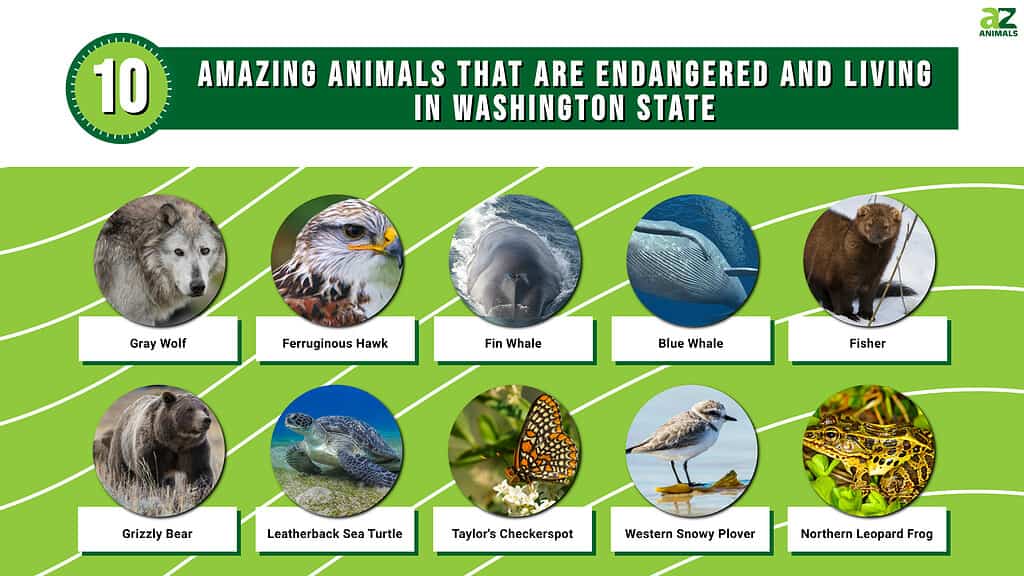
Gray Wolf (Canis lupus)

Since 1980, gray wolves have been classified as endangered in Washington state due to population decline and loss of habitat.
©Nagel Photography/Shutterstock.com
Timber wolves, commonly known as gray wolves, are large canines with distinctive long bushy tails often tipped in black. They have a fur coat that can vary in color from gray and brown to solid white, brown, or black with buffy facial markings. Gray wolves are the largest living wild canine species and can measure between 3 to 5 feet in length. They are territorial and live in packs led by an alpha pair. A pack typically consists of six to eight wolves.
Since 1980, gray wolves have been classified as endangered in Washington state due to population decline and loss of habitat. To protect these animals, state law prohibits malicious harassment, hunting, possessing, and killing of wolves.
The wildlife department in Washington has deemed killing a wolf or any endangered species a gross misdemeanor, which carries a potential penalty of up to a $5,000 fine and one year in jail. Despite good progress in wolf recovery, these animals will remain endangered until state recovery goals are achieved.
Ferruginous Hawk (Buteo regalis)
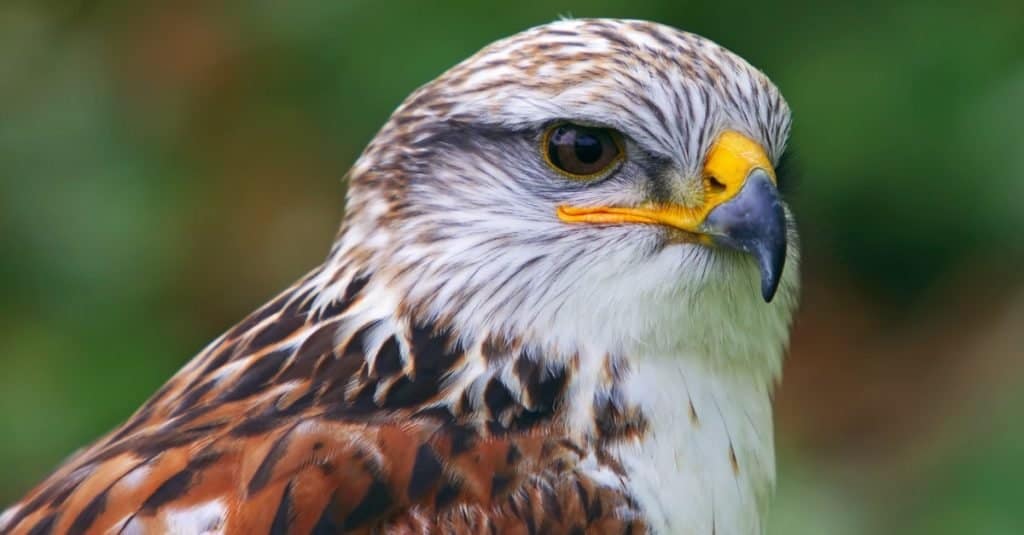
The light morph features a snowy white underside, a grayish head, reddish-brown top plumage, and white tail and underwing linings.
©Nick Biemans/Shutterstock.com
The ferruginous hawk is a sizable bird of prey known for its broad wings, robust chest, large head, and feathered legs. Its average length measures 23 inches, and its wingspan reaches up to 56 inches. This species has two distinct color phases. The light morph features a snowy white underside, a grayish head, reddish-brown top plumage, and white tail and underwing linings. Meanwhile, the dark morph displays a dark brown chest, belly, and head with underwing linings and a whitish tail.
The ferruginous hawk is the largest hawk species in North America. They appear to be unafraid of humans, except during the nesting period, and can even allow a close human approach.
The population in Washington is declining due to the loss and fragmentation of their habitat. This is caused by agricultural and residential development. Preserving sufficient shrub-steppe and native grassland and minimizing disturbance to nesting areas are crucial steps required to recover and maintain the population.
Although ferruginous hawks are classified as endangered in Washington, their federal status is classified as “Least Concern.” Populations in other states are increasing.
Fin Whale (Balaenoptera physalus)
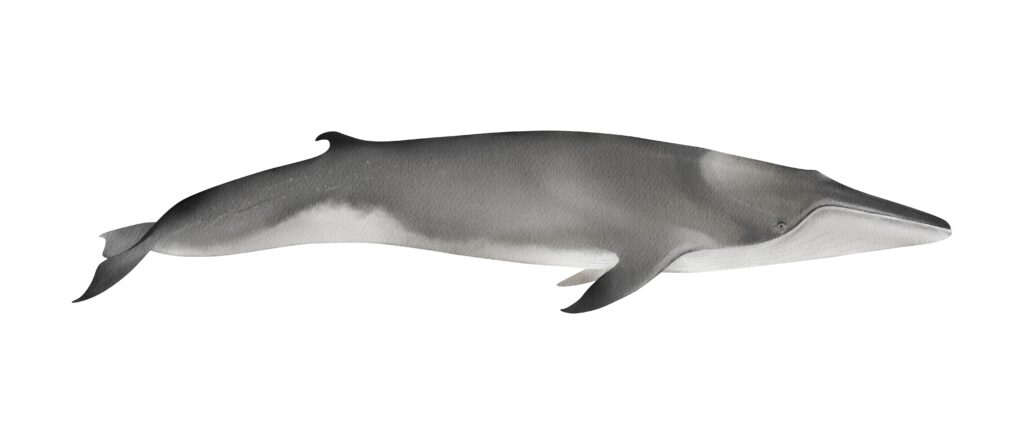
Commercial whalers hunted fin whales extensively for their valuable oil, meat, and baleen, actions which resulted in a drastic decline.
©Diana Askarova/Shutterstock.com
Fin whales are a type of baleen whale and the second-largest species of whale. They are massive creatures, ranging from 75 to 85 feet in length and weighing between 40 to 80 tons. They are social animals, often in groups of two to seven individuals, and are known for their fast swimming speed. In the North Atlantic, they can be found feeding in large groups with other whale species and Atlantic white-sided dolphins.
Commercial whalers hunted fin whales extensively in the past for their valuable oil, meat, and baleen. These actions resulted in a drastic decline in their population. Despite certain populations benefiting from conservation efforts, fin whales remain exposed to a range of hazards. These include habitat loss, toxic pollution, and the effects of climate change. These factors pose risks to the well-being of fin whales and may continue to impact them negatively in the future.
Fin whales are endangered in the North Atlantic, including Washington. However, the population of fin whales along the U.S. West Coast, including Washington, is estimated to be around 9,000 and is growing strongly. Nonetheless, several factors, such as ship strikes, marine debris, fisheries entanglements, and climate change, could impede their recovery.
Blue Whale (Balaenoptera musculus)
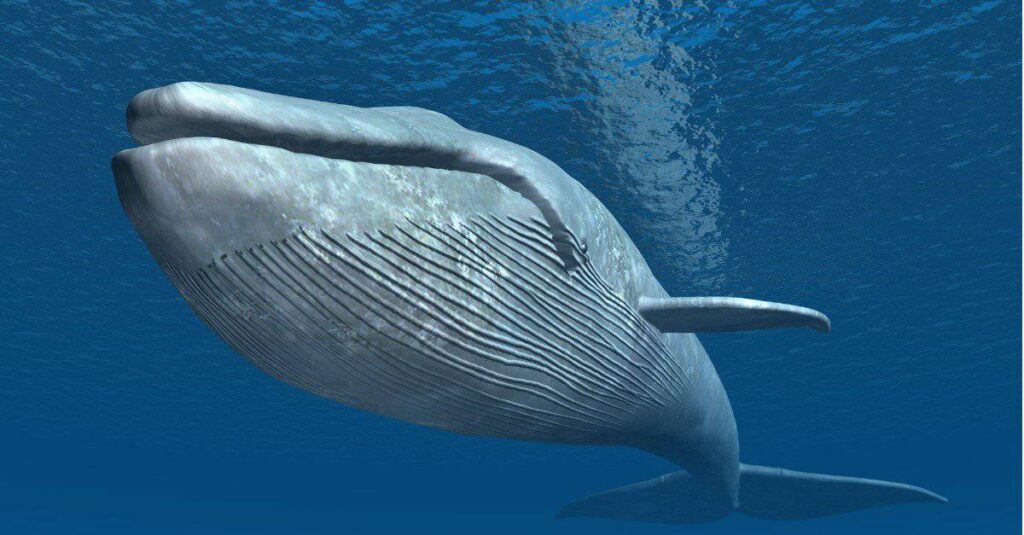
Washington state, the blue whale population is estimated to consist of roughly 1,900 individuals. Luckily, the trend appears to be stable.
©iStock.com/MR1805
On Earth, the blue whale holds the distinction of being the largest creature to have ever lived. It has a slender and elongated gray-blue body with a small dorsal fin. It can grow up to 110 feet in length and weigh up to 165 tons. Shockingly, its tongue can weigh as much as an elephant, while its heart is roughly the size of an automobile. During summer, they feed in the polar regions and undertake a long migration to the equator as winter approaches.
The global commercial whaling industry had a profound impact on the blue whale population, significantly reducing their numbers. This depletion was felt throughout the world, and the consequences were devastating for this magnificent species.
Today, environmental changes, such as habitat loss and pollution, pose a significant threat to the survival of this species. These creatures are also at risk of injury from collisions with ships and accidental entanglement in fishing gear.
In Washington state, the blue whale population is estimated to consist of roughly 1,900 individuals. Luckily, the trend appears to be stable. The blue whale is listed as an endangered species under both state and federal regulations.
Fisher (Pekania pennanti)
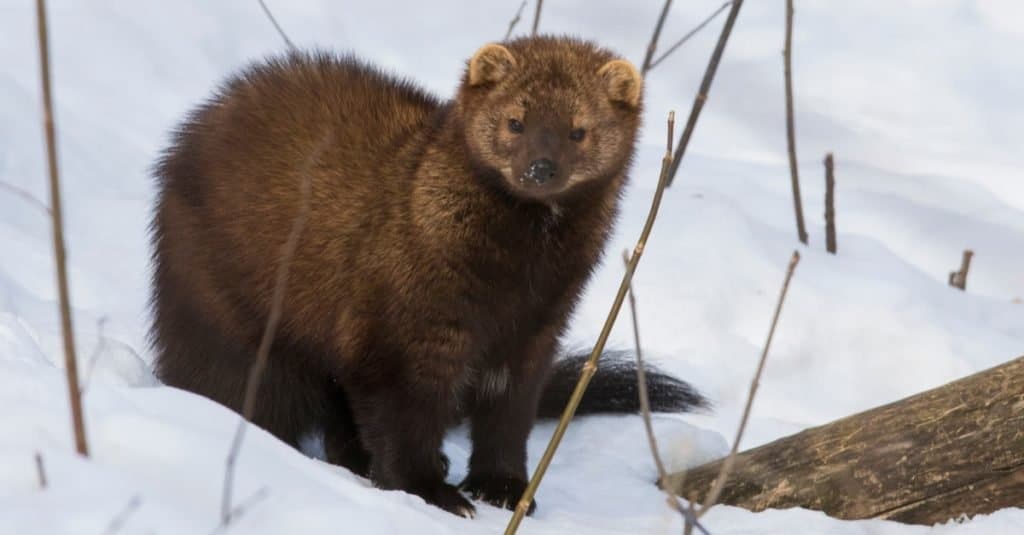
These cute animals are part of the weasel family that includes minks, otters, and martens.
©Mircea Costina/Shutterstock.com
The fisher is a mammal with dark brown fur and a distinctive long, bushy tail. It is part of the weasel family that includes minks, otters, and martens. They are most active at dawn and dusk and tend to be solitary, only interacting with other fishers during mating. Adults can be 3 to 3.5 feet in length, and males are larger than females.
In the past, fishers were widespread in Washington but were over-trapped to extinction due to the high value of their fur. Despite their absence from the ecosystem for decades, fisher habitat and prey are still abundant, making them a good candidate for population restoration. To achieve this, Washington is reintroducing fishers to the state by relocating them from healthy populations in British Columbia.
Even though efforts have been made to protect this species, the fisher is still considered endangered in the state. Conservationists are hopeful this will change soon!
Grizzly Bear (Ursus arctos)
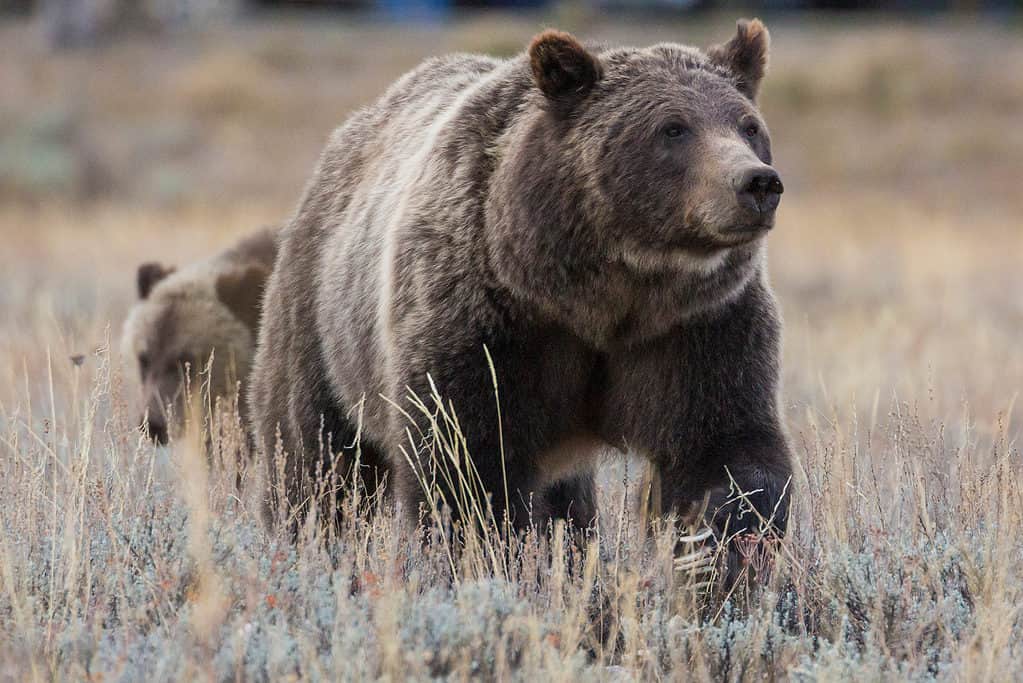
The Selkirk Mountains in northeast Washington are currently home to a population of grizzly bears.
©BlueBarronPhoto/Shutterstock.com
Grizzly bears have several physical characteristics that distinguish them from black bears. These include longer and more curved claws, humped shoulders, and a concave face. They usually have dark brown fur, varying from blonde to black. Grizzlies can adapt their activity patterns to avoid humans and can be active both day and night. They can grow up to 8 feet and weigh around 900 pounds.
The Selkirk Mountains in northeast Washington are currently home to a population of grizzly bears. Occasional sightings have been reported near the Canadian border, specifically in the northern Stevens and Ferry counties. According to a recent survey, the grizzly bear population is reportedly experiencing gradual growth.
The most significant danger faced by these bears is the loss of their natural habitats. It is important to note that these bears are both federally threatened, and state listed as endangered species. Killing one, regardless of intent, can result in substantial financial fines and penalties.
Leatherback Sea Turtle (Dermochelys coriacea)
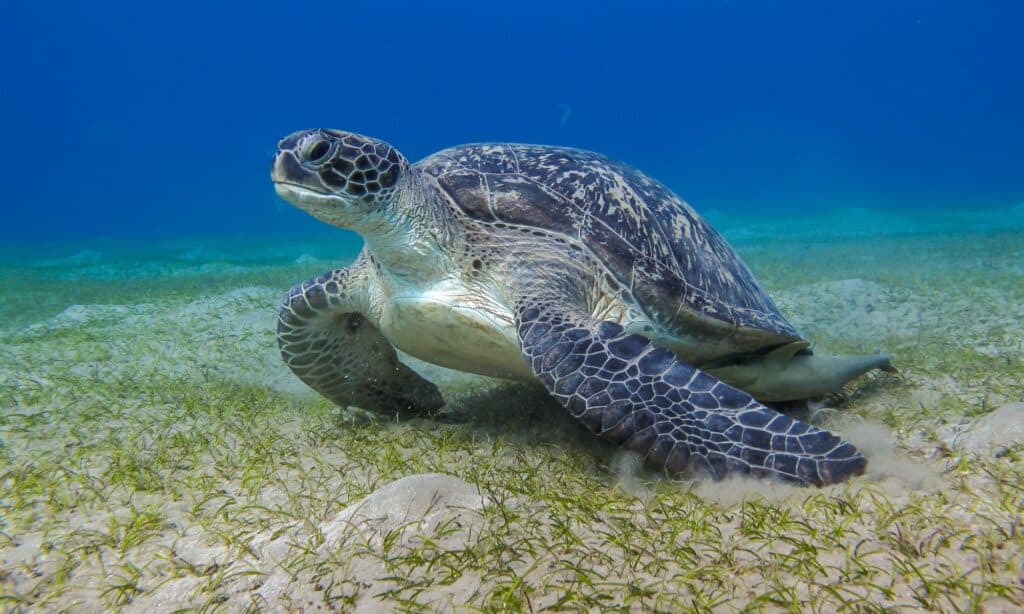
The leatherback
sea turtle
is a rare and vulnerable species. Its worldwide population has decreased by around 40 percent.
©iStock.com/YasserBadr_Beenthere
The largest turtle species on planet earth, the leatherback sea turtle, weighs up to 1,000 pounds and has a soft shell that can be up to 6 feet long. With its unique seven-ridged shell, this creature is an impressive swimmer, capable of reaching depths of 4,000 feet and remaining submerged for up to 85 minutes.
The leatherback sea turtle is a rare and vulnerable species, as its worldwide population has decreased by around 40 percent during the past three generations. These turtles face several threats, such as hunting, egg collection for human consumption, and incidental capture in fishing gear (also known as bycatch). These threats occur both on the beaches where they lay their eggs and in their marine habitat.
The leatherback sea turtle is a vulnerable species in the country, but its conservation status is even more critical in Washington, where it is classified as endangered due to a decreasing population.
Taylor’s Checkerspot (Euphydryas editha taylori)
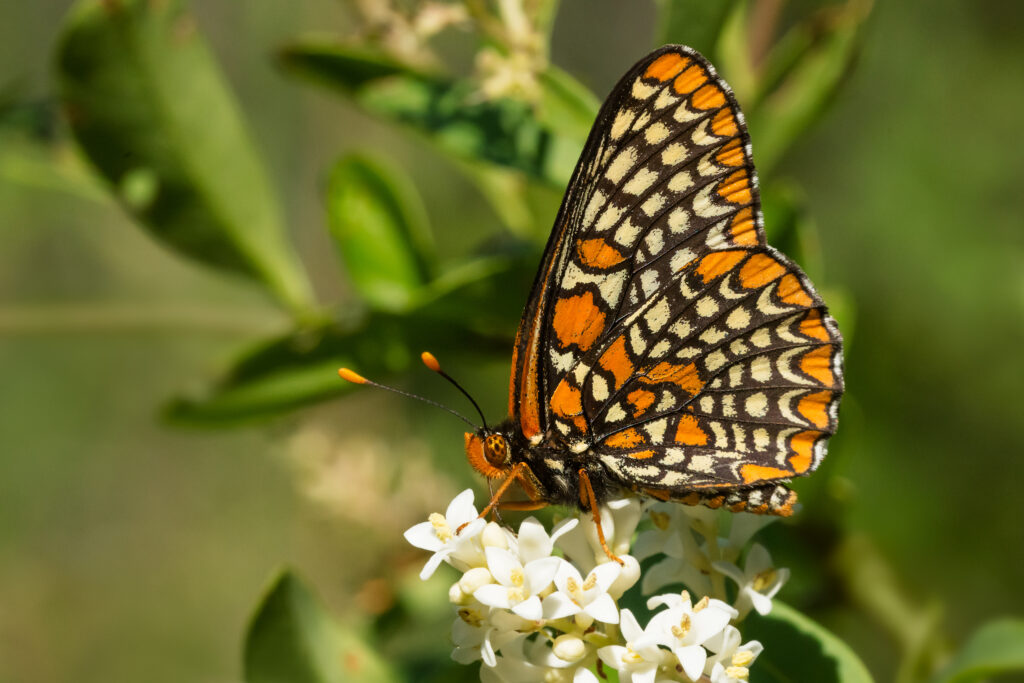
The Taylor’s checkerspot
butterfly
is facing the risk of extinction across its range in the US, primarily due to its isolated populations.
©Paul Reeves Photography/Shutterstock.com
An endemic butterfly species in the Pacific Northwest, Taylor’s checkerspot features a captivating, checkered pattern of black, orange, and cream. This medium-sized butterfly has a wingspan that measures less than 2.25 inches. Its survival heavily relies on prairie and grassland environments. It inhabits small forest clearings, as well as coastal bluffs and dunes.
The Taylor’s checkerspot butterfly is facing the risk of extinction across its range in the US, primarily due to its isolated populations, habitat degradation caused by invasive plant species, and the vulnerability of the species to extreme weather conditions. Presently, the butterfly is limited to a few scattered populations within Washington state.
The Taylor’s checkerspot butterfly is an endangered species in the state, as the population has been declining. It is also included on the list of endangered species under the US Endangered Species Act.
Western Snowy Plover (Charadrius nivosus)
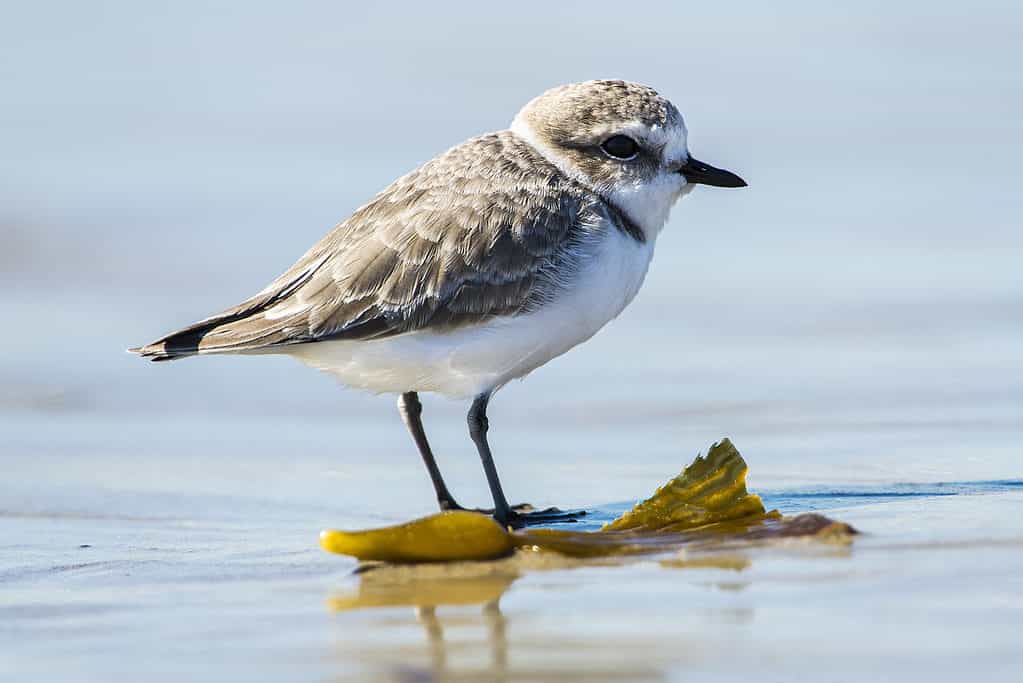
When searching for food, the plovers sometimes scavenge for insects in the sand or forage in low-lying plants.
©iStock.com/drferry
Measuring approximately 6 inches in length, the snowy plover is a small bird. Its upper parts are typically pale brown or grayish, while its underbelly is white. The bird also features a black bill and dark legs. Male snowy plovers are territorial, aggressively defending their territory by confronting other bird species and lowering their head before charging at them. When searching for food, the plovers sometimes scavenge for insects in the sand or forage in low-lying plants.
The plover population in Washington is notably limited and at high risk from numerous threats, including predators, shoreline alteration, severe weather, dune stabilization, and human activities. Within Washington, this species is solely present in Grays Harbor and Pacific counties, with a mere 100 individuals estimated to inhabit the area, making it an especially vulnerable population.
Despite the apparent growth of the snowy plover population in the Pacific Northwest, thanks to management initiatives in both Washington and Oregon, the state of Washington still classifies this bird as endangered. This highlights the need for continued action to ensure the conservation of this vital species in the area.
Northern Leopard Frog (Lithobates pipiens)
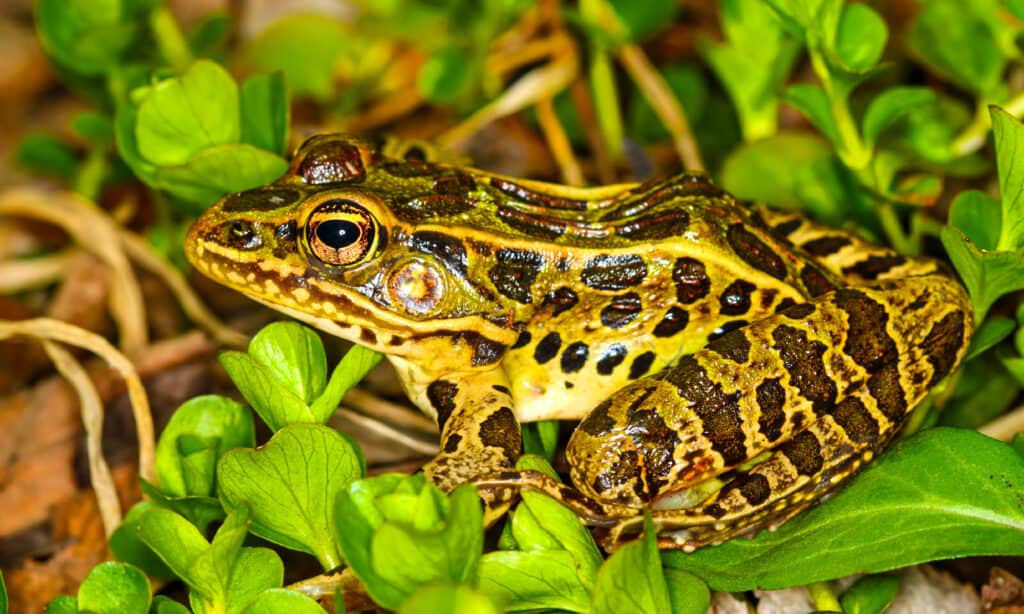
It has a slim body, long legs, and smooth skin and typically grows to be between 3 and 4 inches long from snout to vent.
©Jason Patrick Ross/Shutterstock.com
In Washington, the northern leopard frog is an endangered aquatic frog species. It is identifiable by its distinctive brown or green coloration and the pattern of dark spots arranged in rows between light-colored dorsolateral folds along its back and sides. It has a slim body, long legs, and smooth skin and typically grows to be between 3 and 4 inches long from snout to vent.
The population of northern leopard frogs has decreased significantly, and there are several reasons for this decline. Among them are the loss and deterioration of their natural habitats, the introduction of foreign predators like bullfrogs, crayfish, and nonnative fish, the impact of pesticides and diseases, and the influence of climate change on aquatic environments.
Efforts in central Grant County are underway to help recover this species. The Washington Department of Fish and Wildlife is collaborating with partners such as Washington State University, the Oregon Zoo, U.S. Fish and Wildlife Service, and Northwest Trek to gain a better understanding of the specie’s population status and trends, to enhance the quality of the frog’s habitat, and to reintroduce a new population of northern leopard frogs to the Columbia National Wildlife Refuge.
Summary Of 10 Amazing Animals That Are Endangered And Living In Washington State
| Rank | Animal |
|---|---|
| 1 | Gray Wolf |
| 2 | Ferruginous Hawk |
| 3 | Fin Whale |
| 4 | Blue Whale |
| 5 | Fisher |
| 6 | Grizzly Bear |
| 7 | Leatherback Sea Turtle |
| 8 | Taylor’s Checkerspot |
| 9 | Western Snowy Plover |
| 10 | Northern Leopard Frog |
The photo featured at the top of this post is © Holly Kuchera/Shutterstock.com
Thank you for reading! Have some feedback for us? Contact the AZ Animals editorial team.






